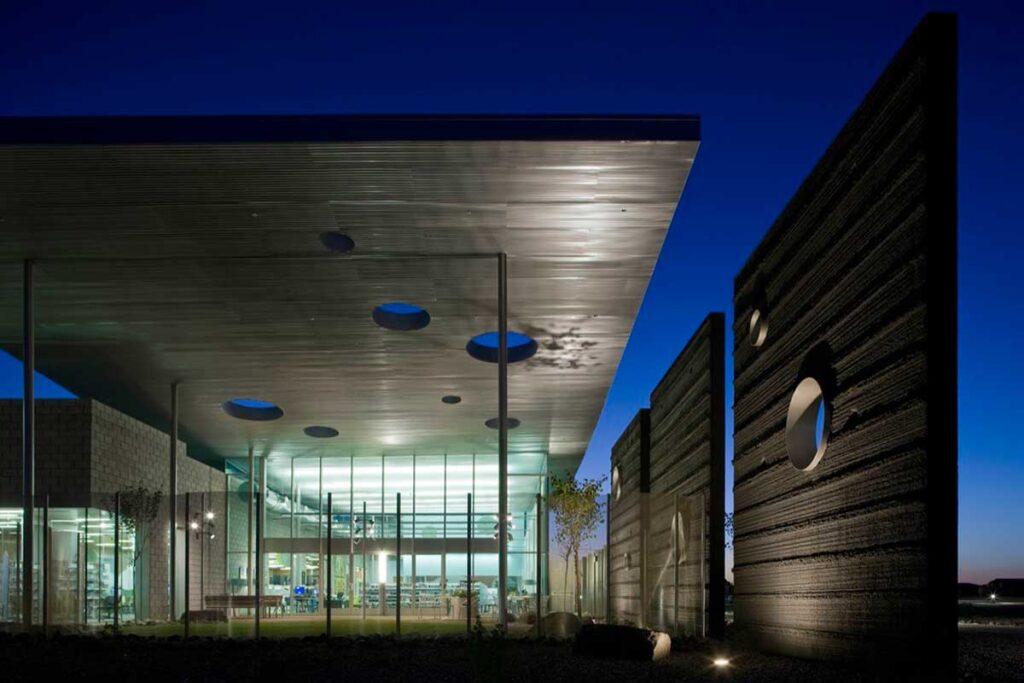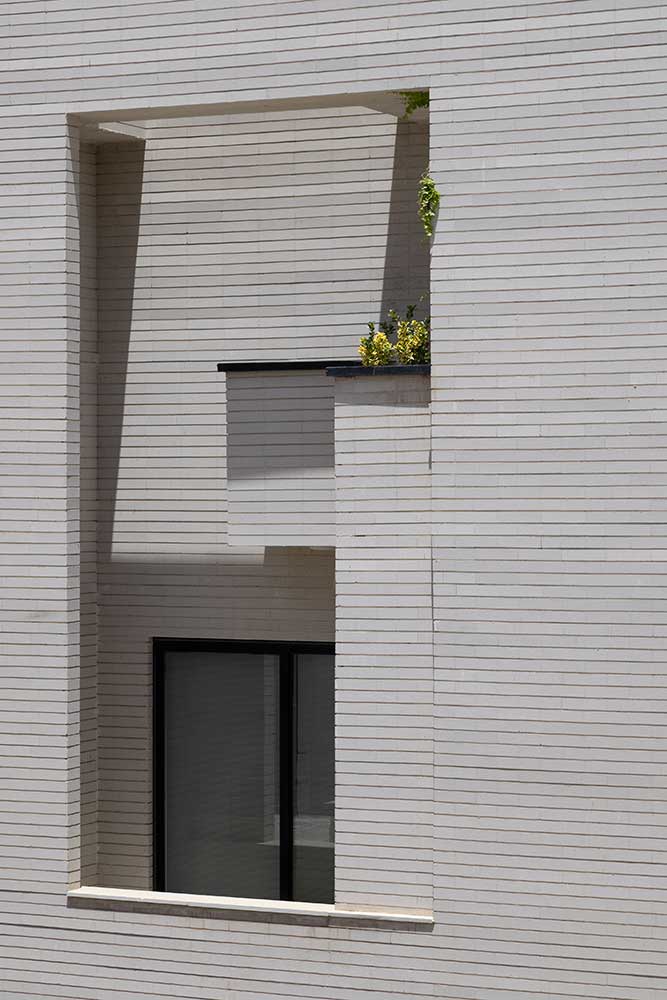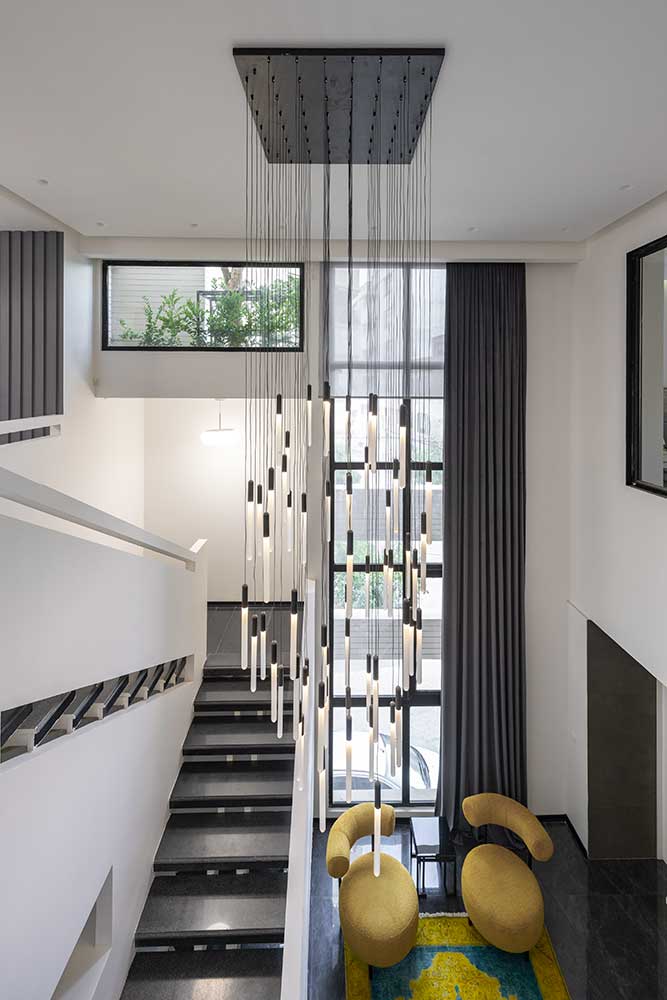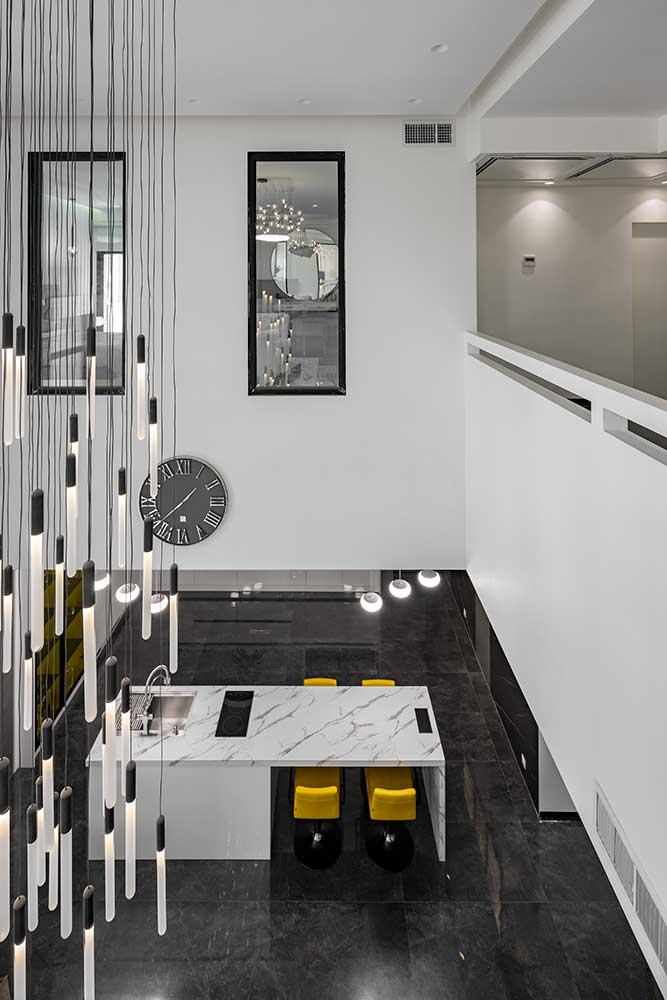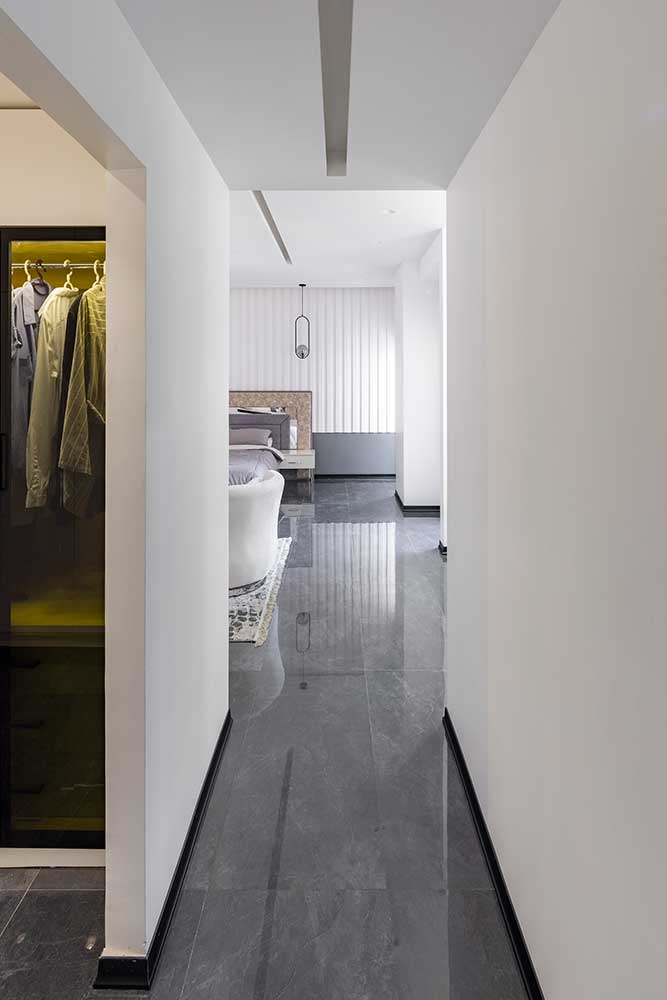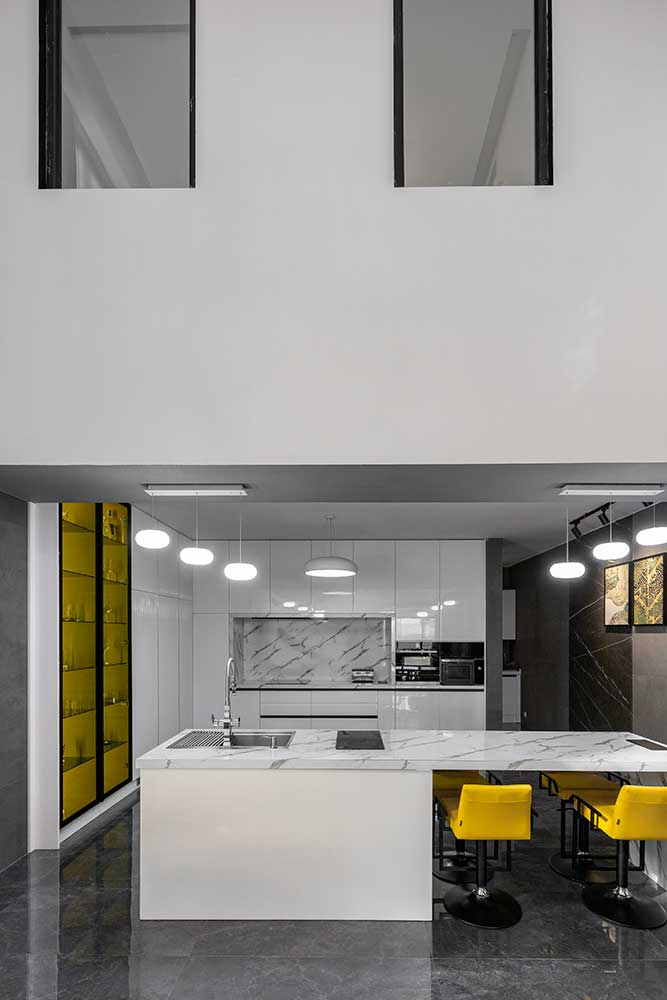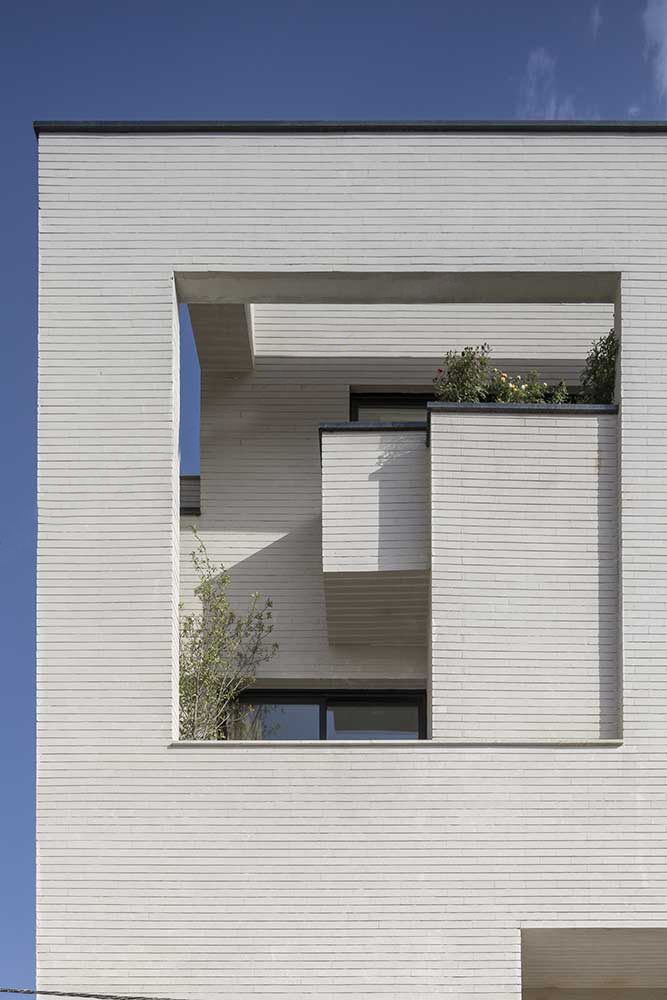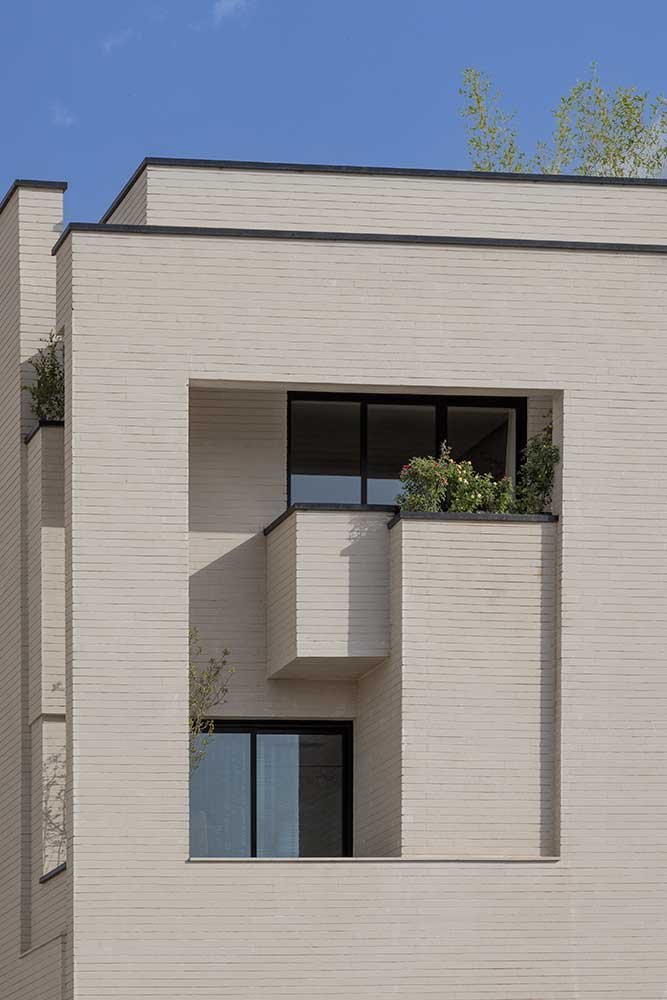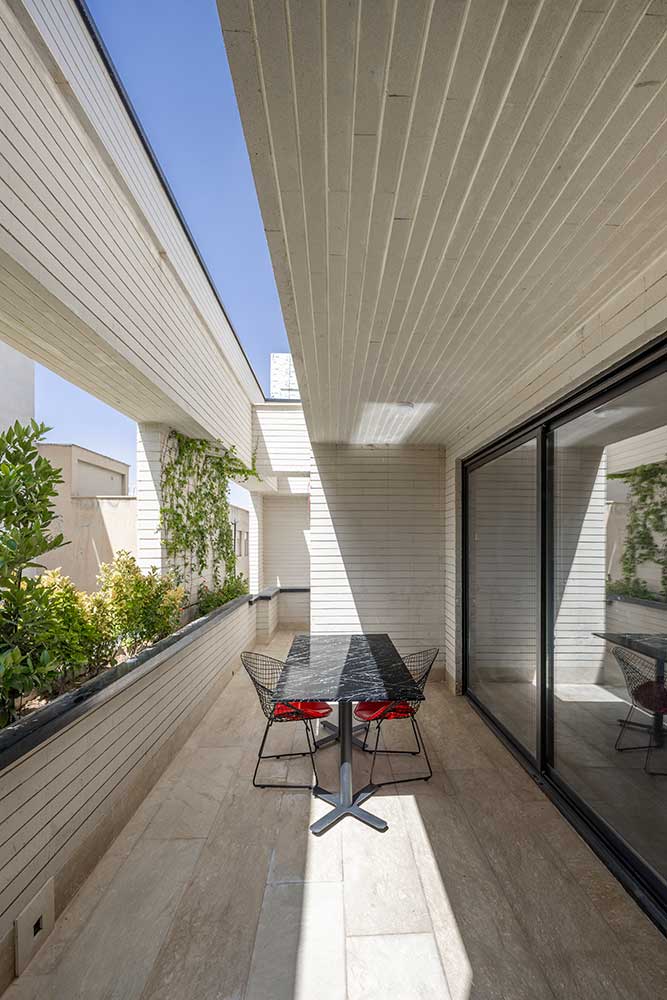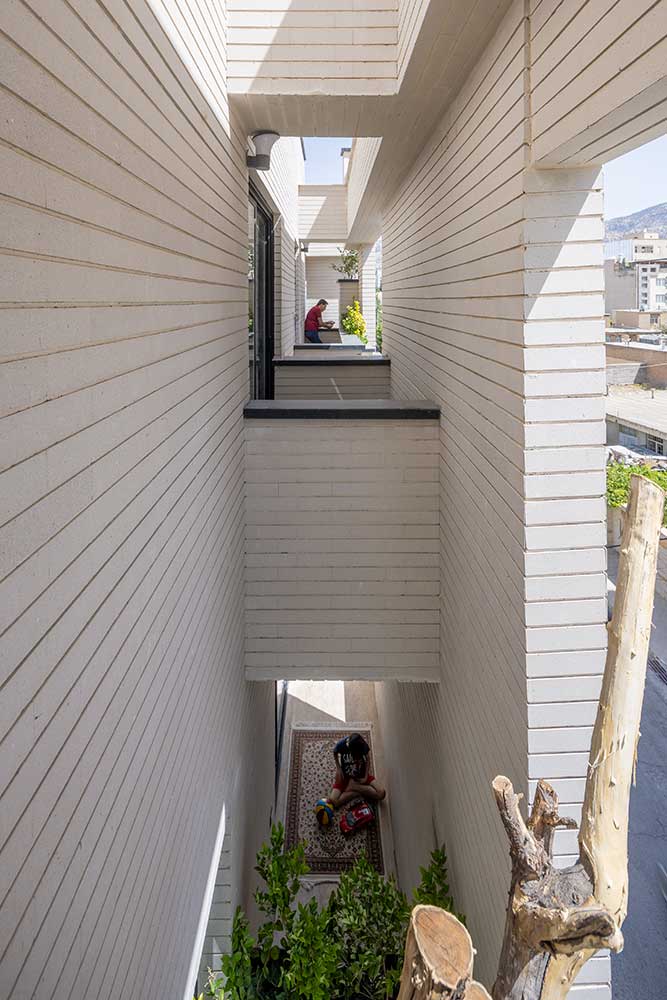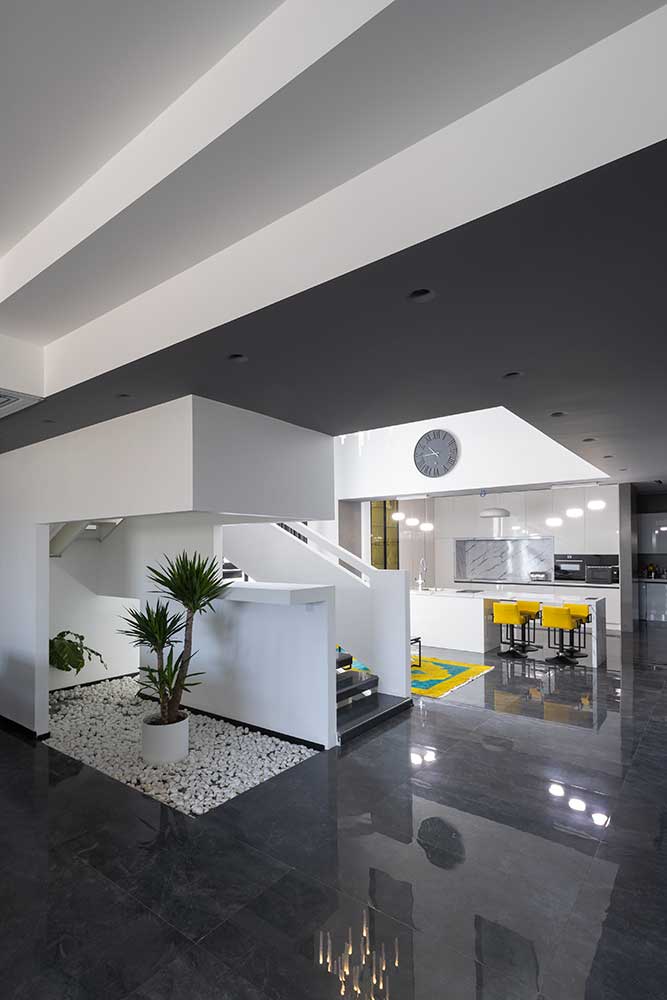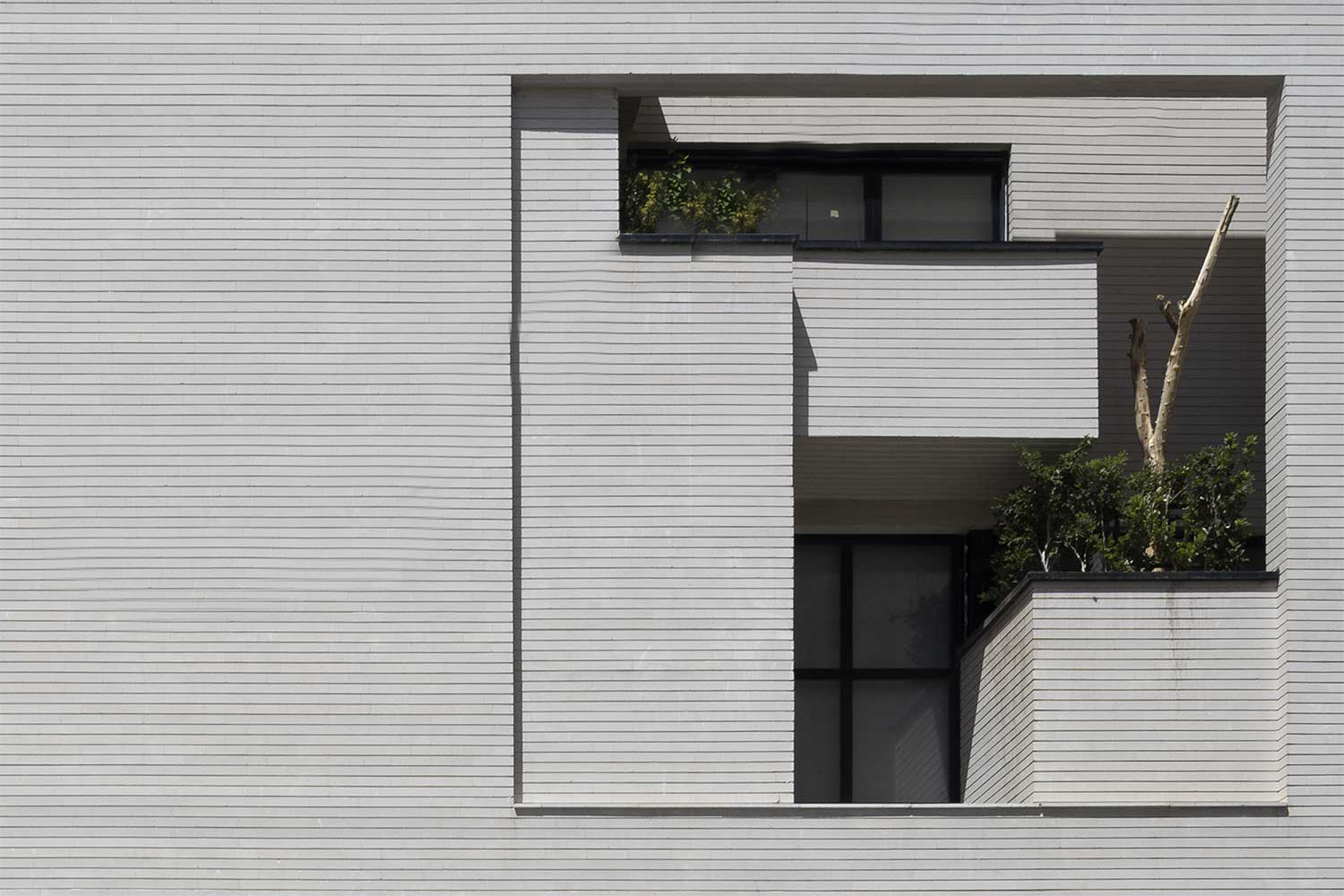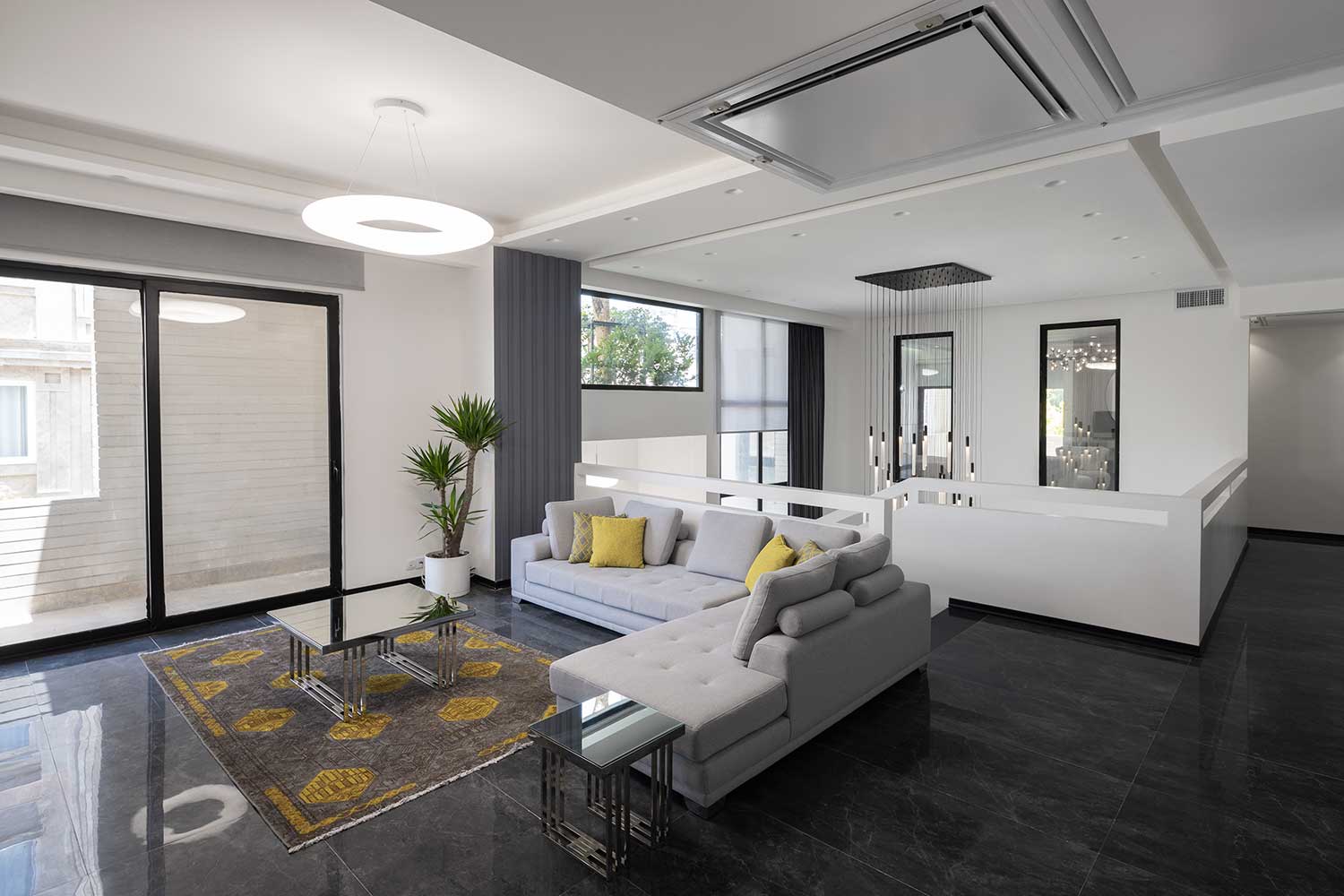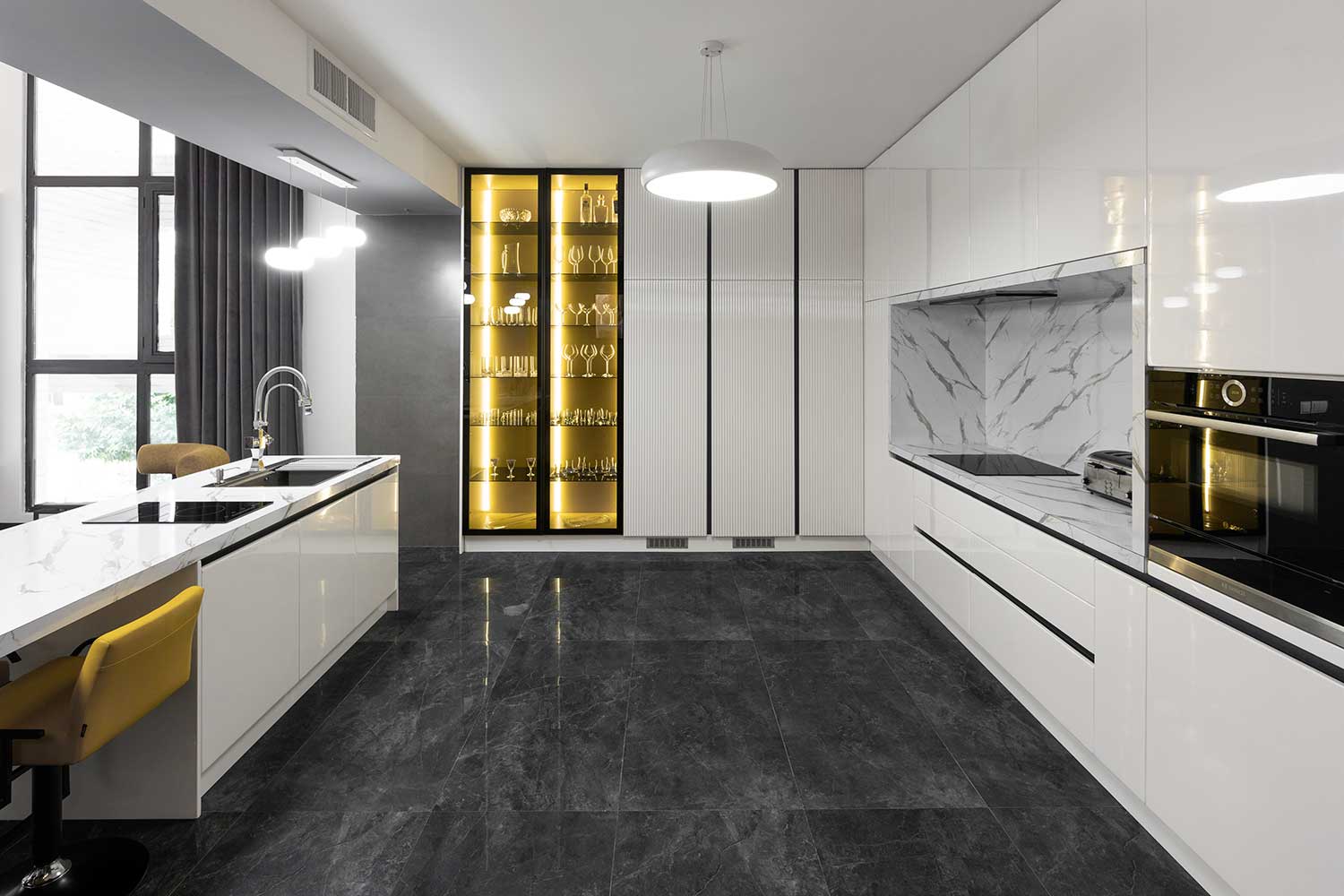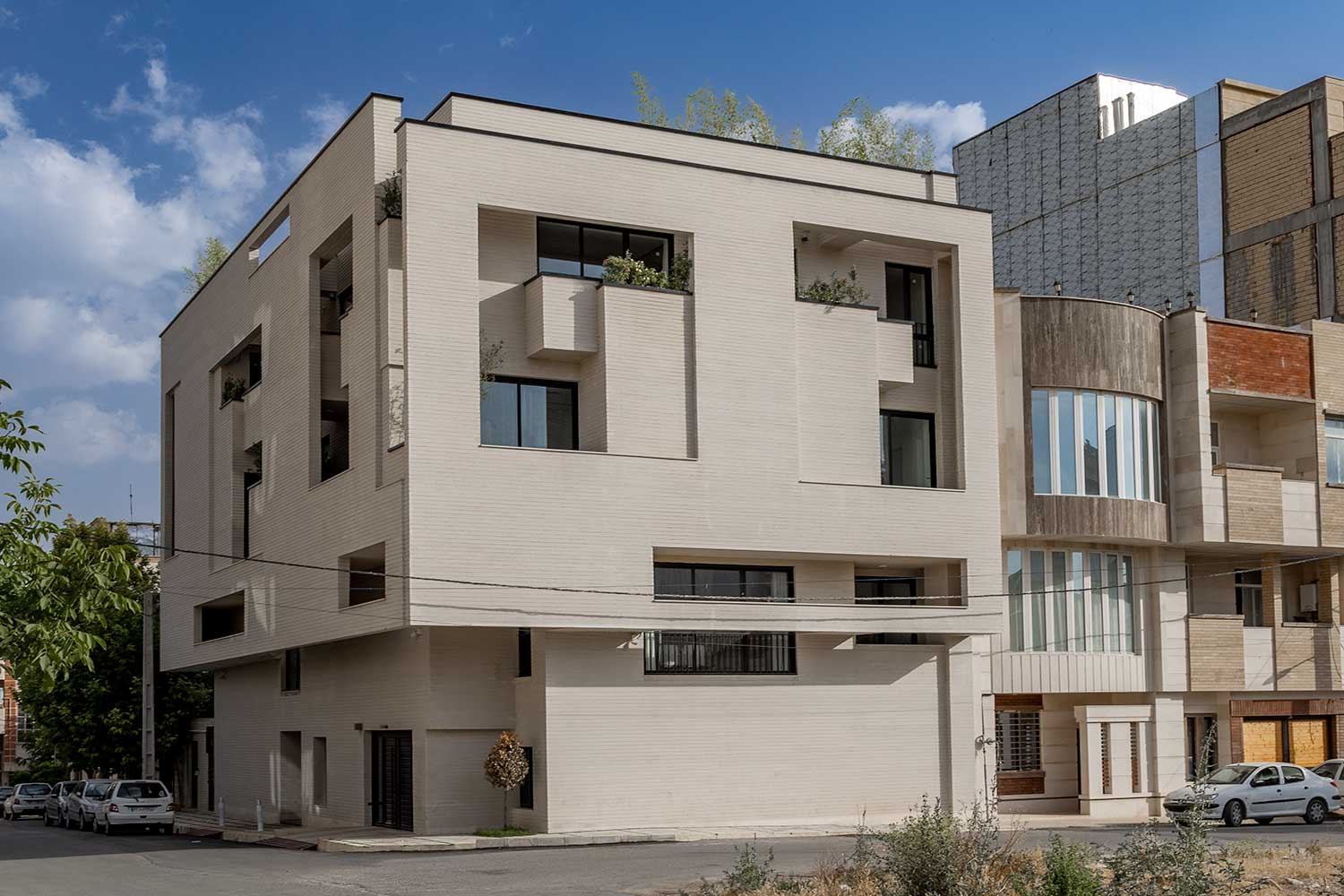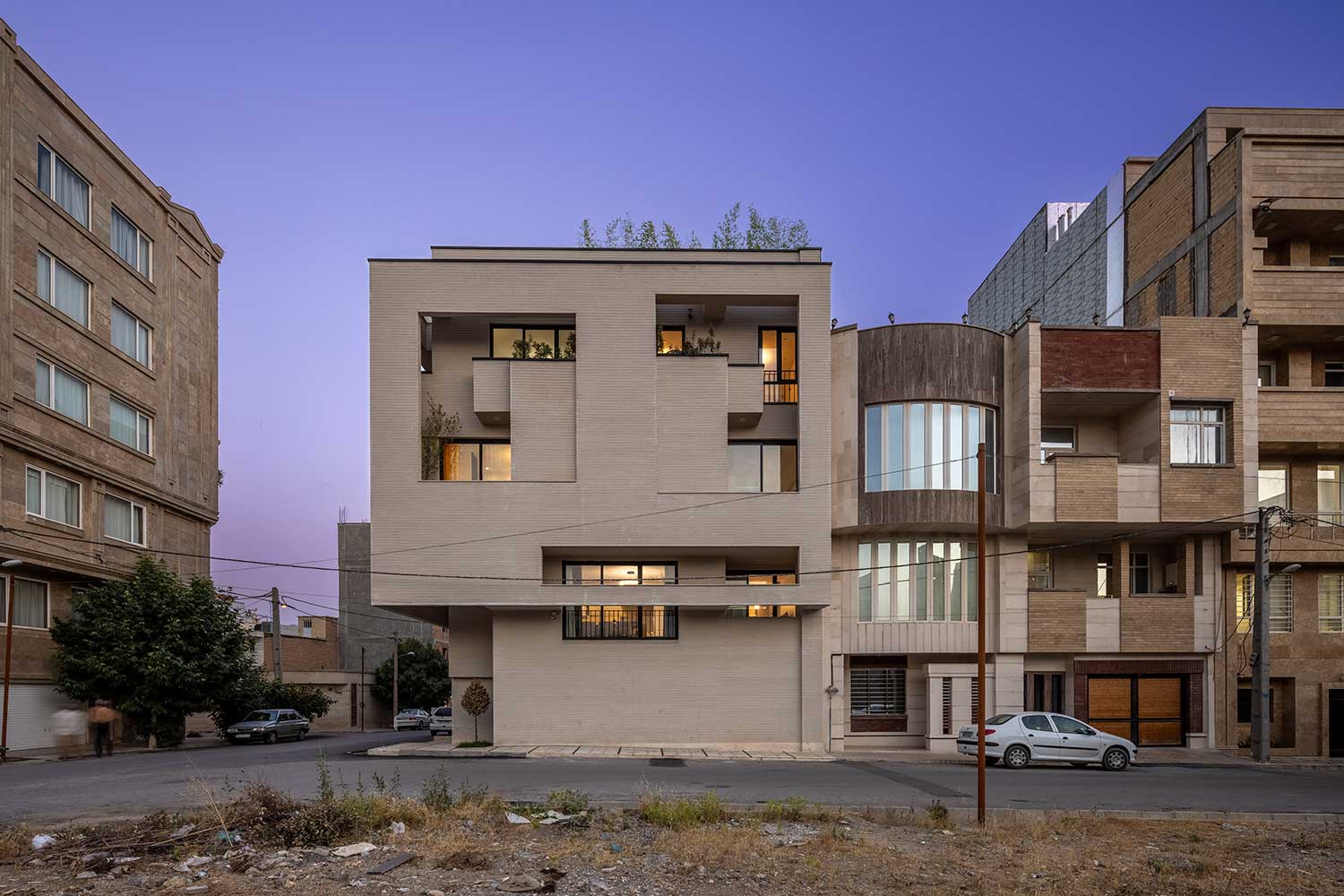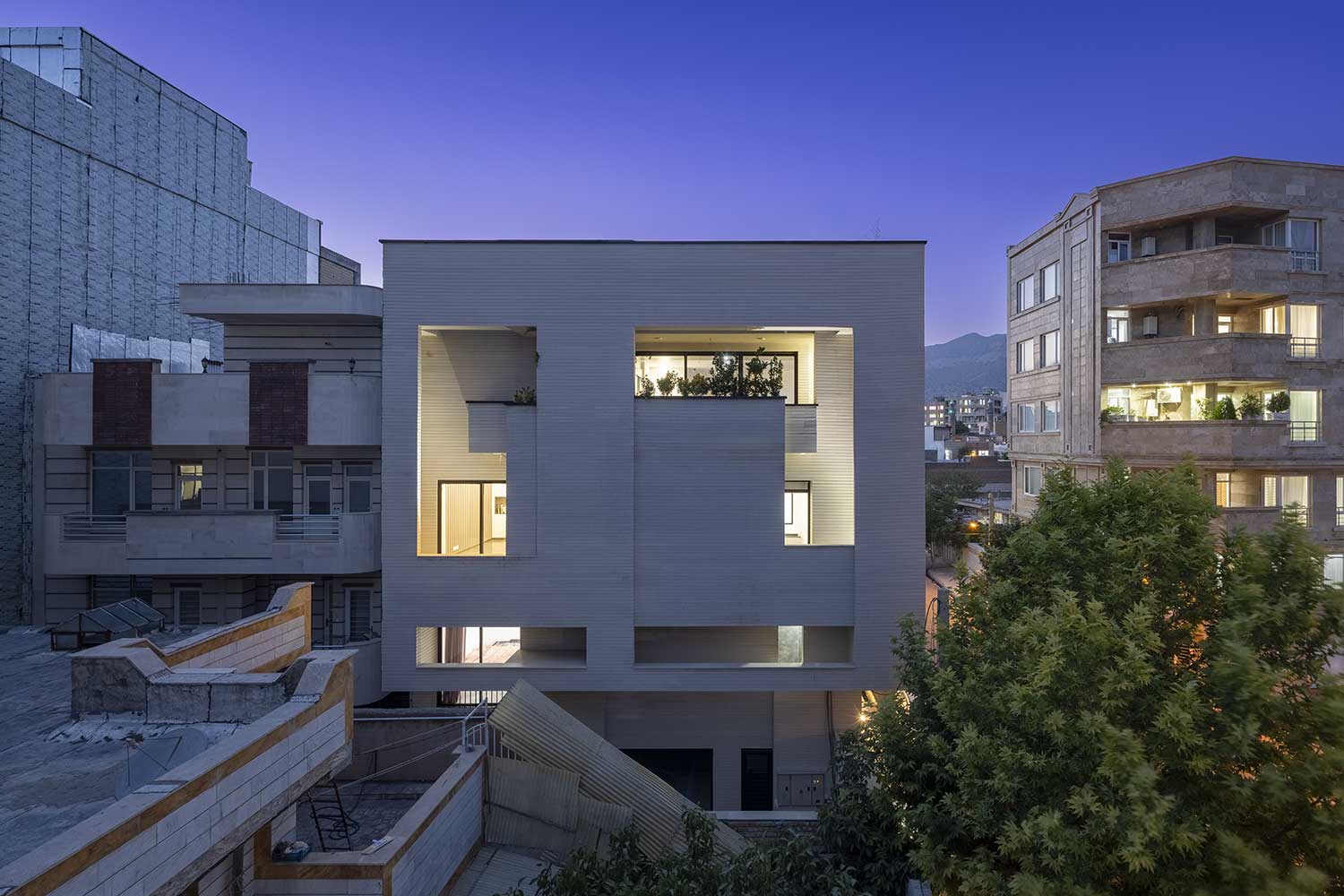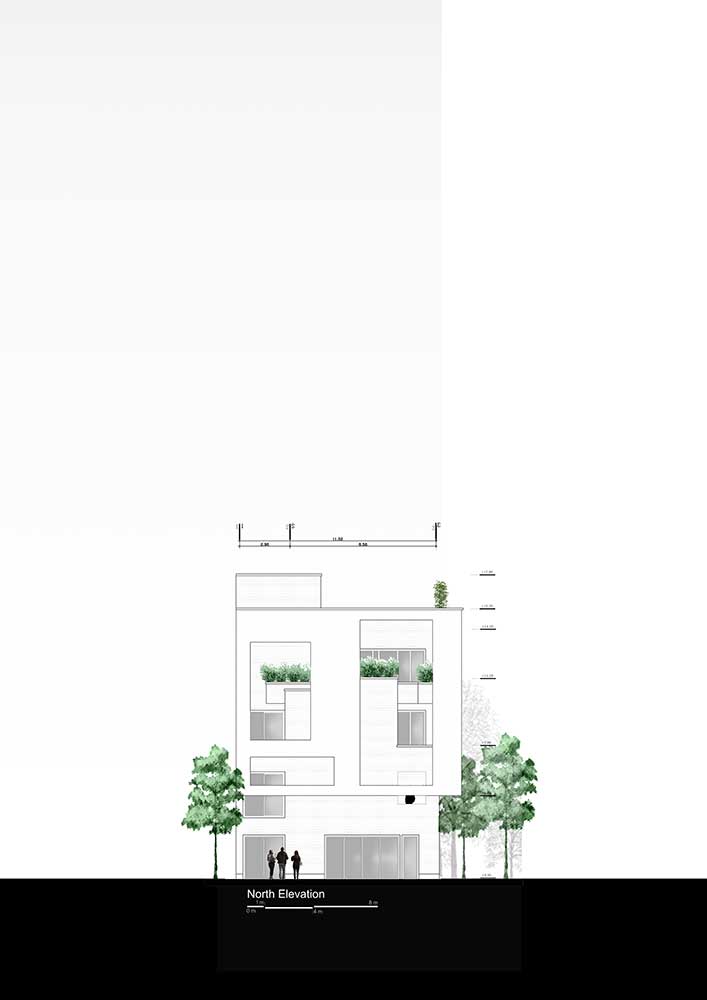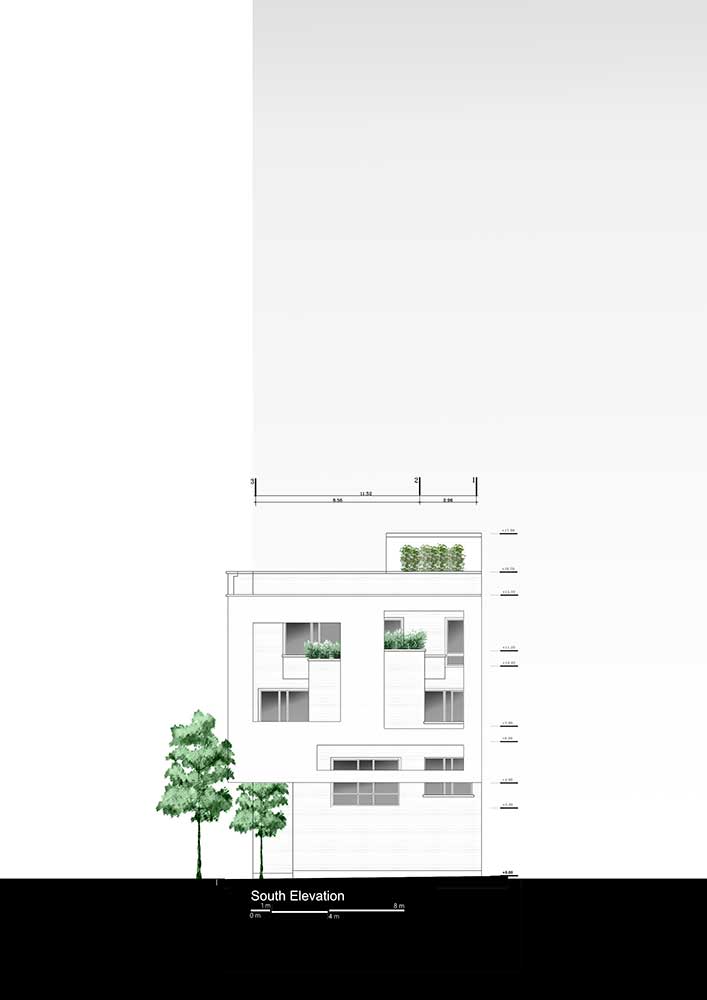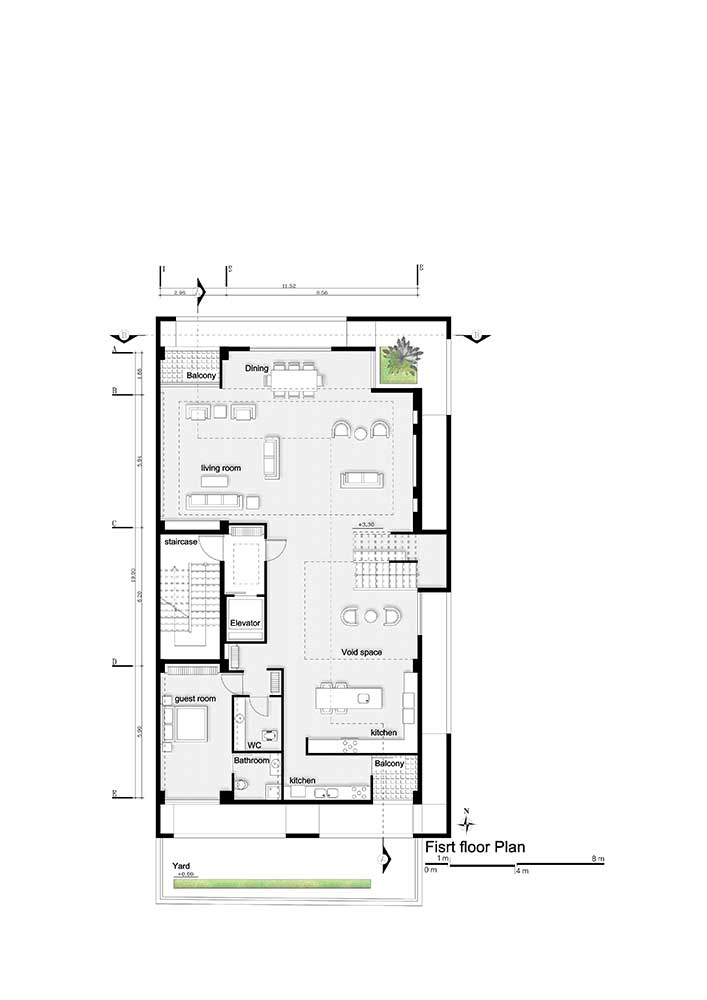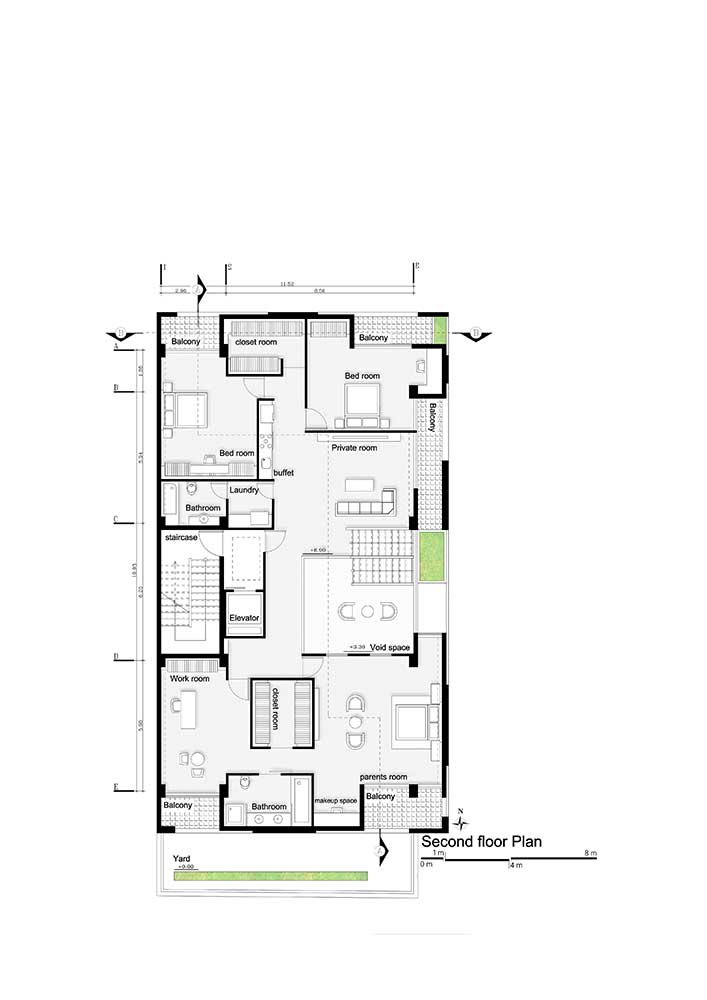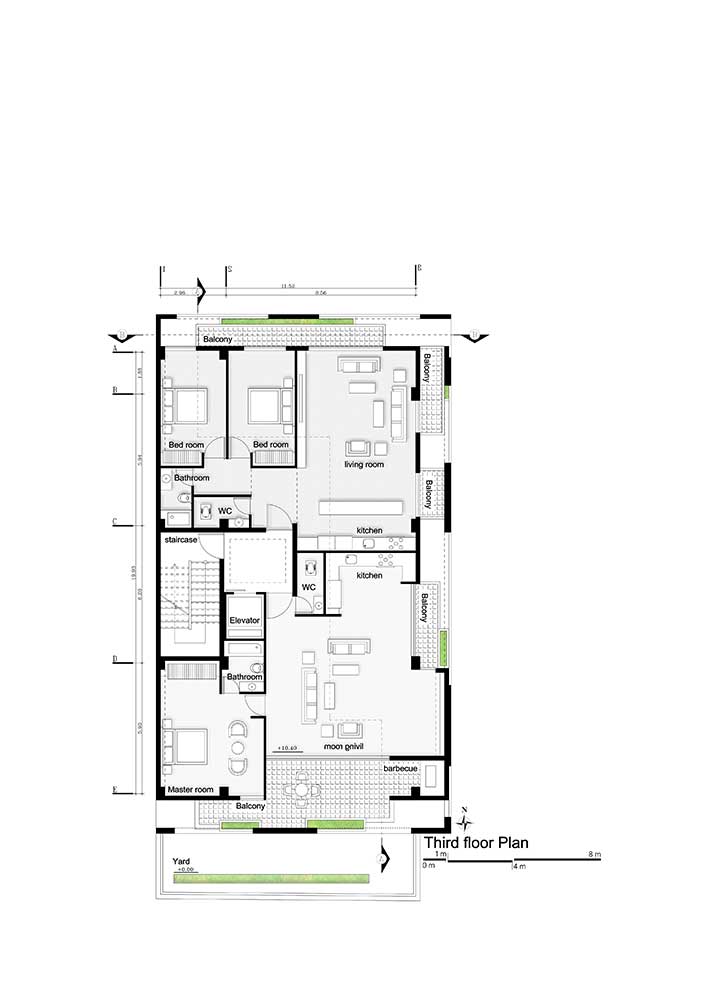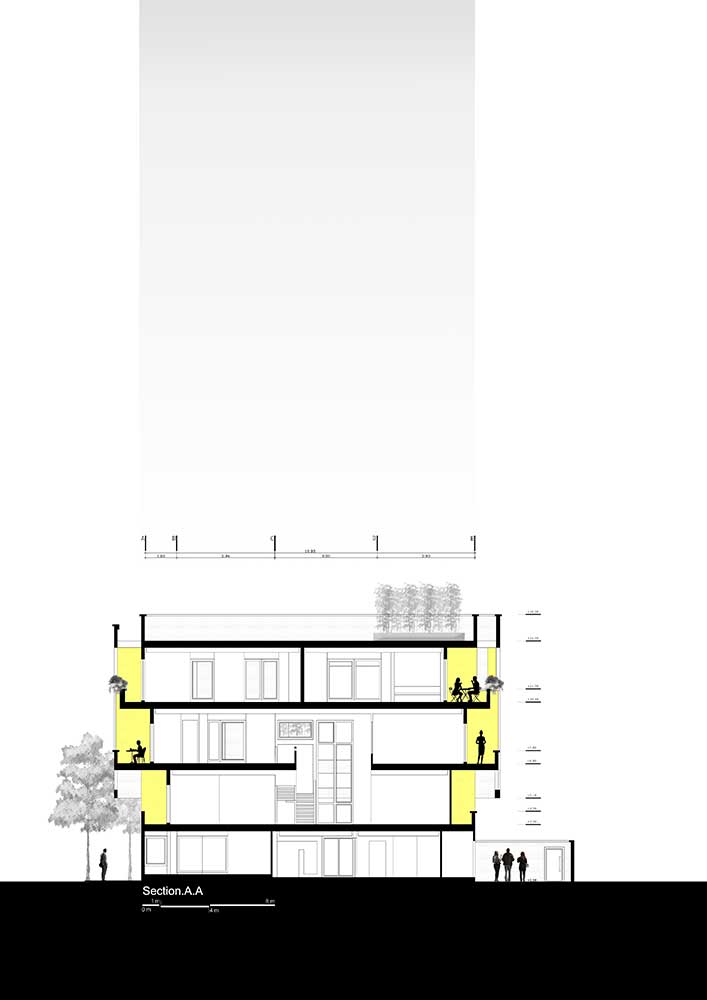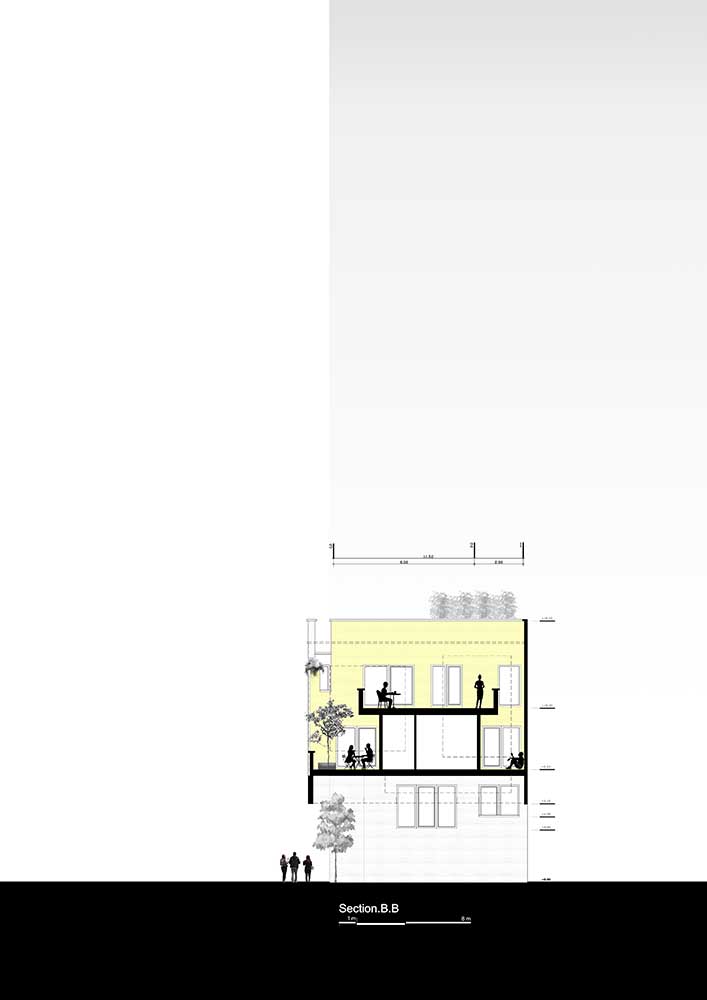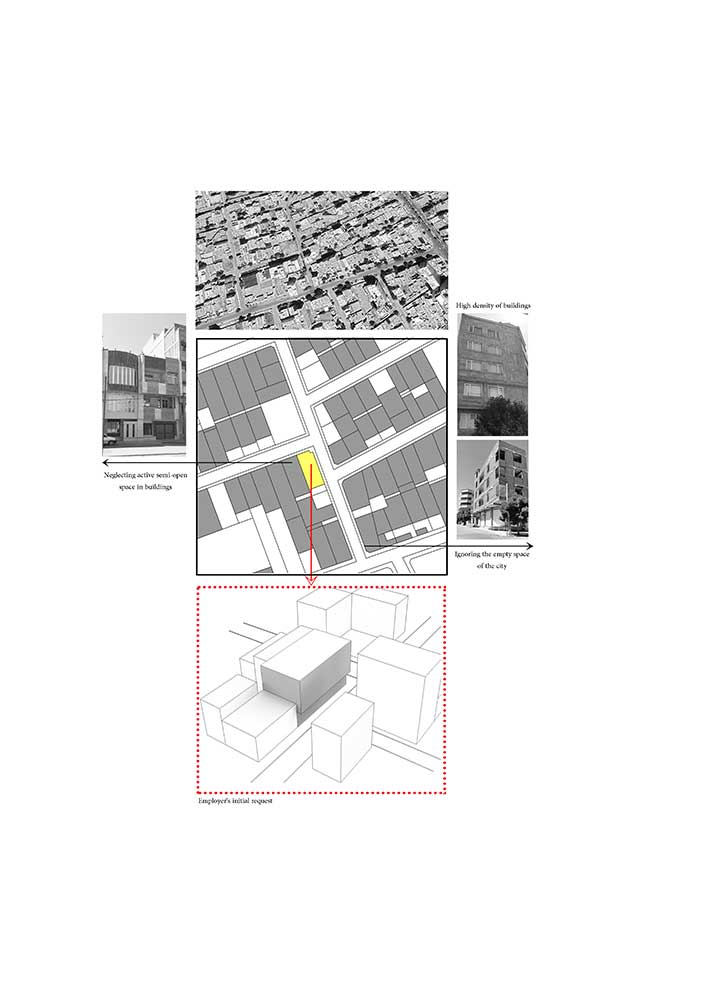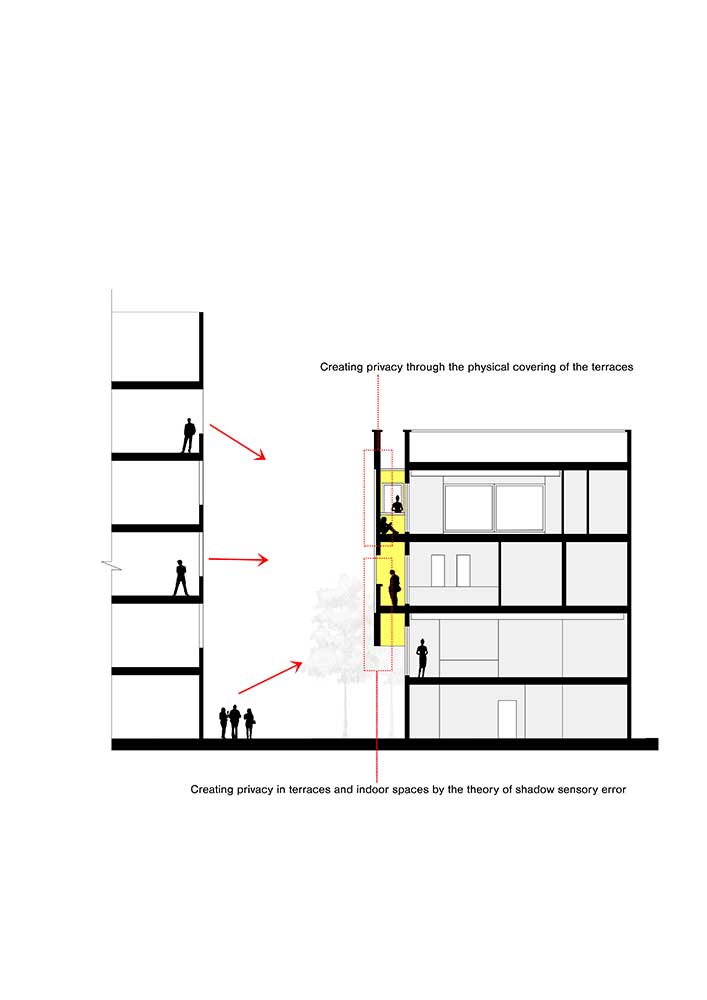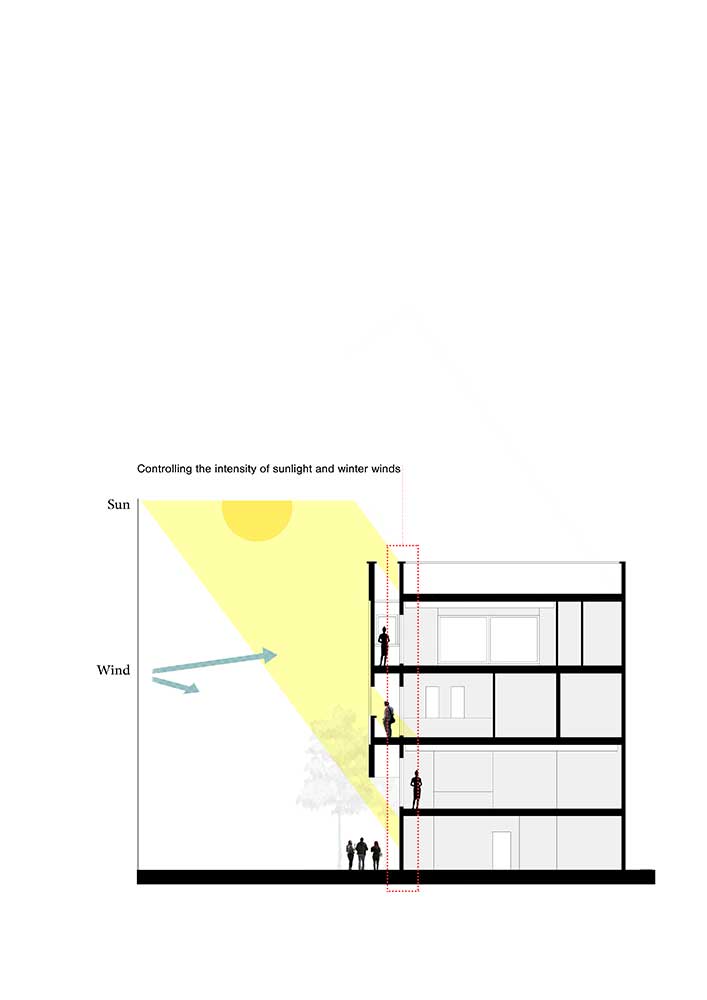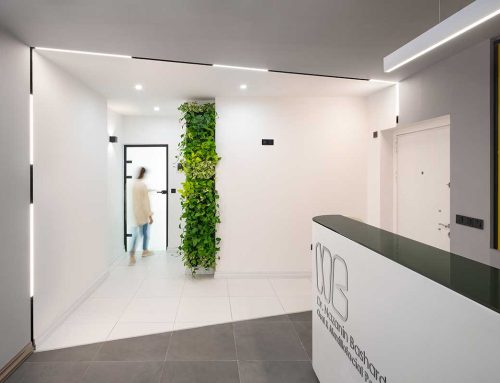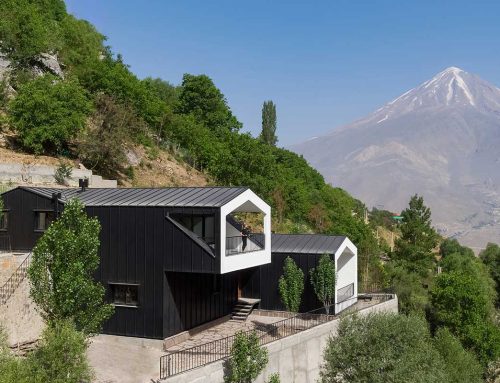همبود، اثر محمد هادیان پور و رضا منصوری
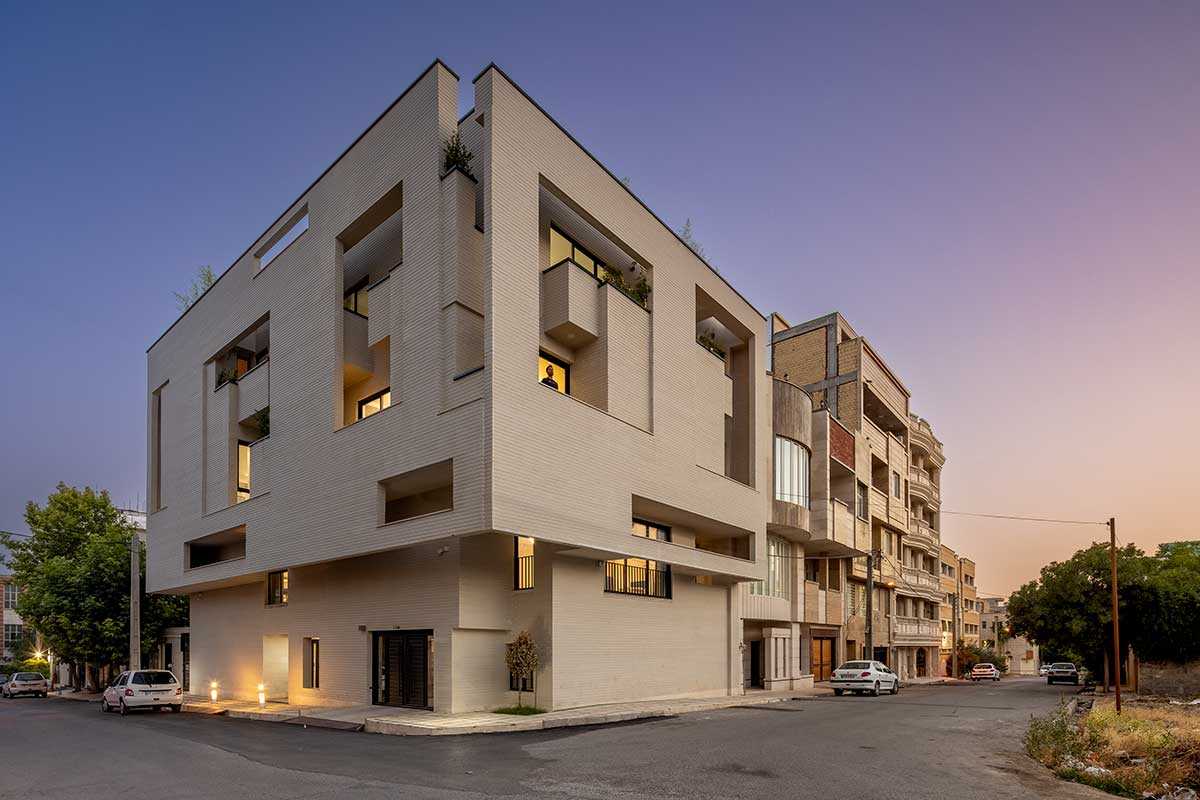
ساختمان گلدان
میلیونها انسان در واحدی به نام شهر تهران زندگی میکنند که هر یک به طریقی، به دنبال نمایش هویت خود هستند و مسکن همواره یکی از اصلیترین بسترهای نمایش هویت انسان بوده است. معماران و شهرسازان تهران نیز با سخاوتی بینظیر در طول تاریخ این شهر، مجموعهای از انواع بناها را، از رومی گرفته تا سنتی، در اختیار شهروندان تهرانی قرار دادهاند و همیشه افرادی مشغول انتخاب، خرید و فروش و جابهجایی در این بازار پیچیده، متنوع و پرهیاهو هستند.
ما در پروژهی گلدان، به دنبال خلق فضایی آرام، صمیمی، متواضع و بدون هیاهو و پیچیدگی بودهایم. بعد از گذشتن از پلی که حیاط را به بنای اصلی متصل میکند، مکعبهای آجری و چوبی متعددی که نمایندهی زندگیهای مختلف جاری در کلیت بنا بودند، روی هم قرار گرفته و یک مکعب واحد را به وجود آوردند. لغزش و تورفتگی مدولها نیز بازی آرامی را در حجم کلی به وجود آورد و سپس سایهبانها، نردهها و جاگلدانیهای فلزی، با جزییات ظریف و دقیق، روی نما نشستند. در انتها، گلدانهای متنوعی که ساکنین متناسب با سلیقهی خود، بر روی جاگلدانیها و تراسها قرار میدهند، بازی مکعبها را کامل میکنند و پروژهی گلدان را شکل میدهند.
معماری معاصر ایران: مسکونی
_______________________________________
نام پروژه: ساختمان مسکونی گلدان
عملکرد: مسکونی
شرکت-دفتر طراحی: استودیو معماری زیما
معماران اصلی: علیرضا جوانمرد
همکاران طراحی: امیر ابریشمی
گرافیست: احسان کازرونی
مجری: شرکت کنگره سازان، مهندس فکوری
سازه: مهندس غیوری
کارفرما: مهندس تدین , مهندس حبیبیان
نوع سازه: اسکلت فلزی
نوع تاسیسات: موتورخانه مرکزی چیلر
مساحت زمین: 4743 مترمربع
تاریخ شروع و پایان ساخت: 1394-1391
عکاس پروژه: پرهام تقی اف، امیر ابریشمی
ایمیل zima.architecture.studio@gmail.com
اینستاگرام zima_studio_design
Hambud, Mohammad Hadianpour & Reza Mansouri
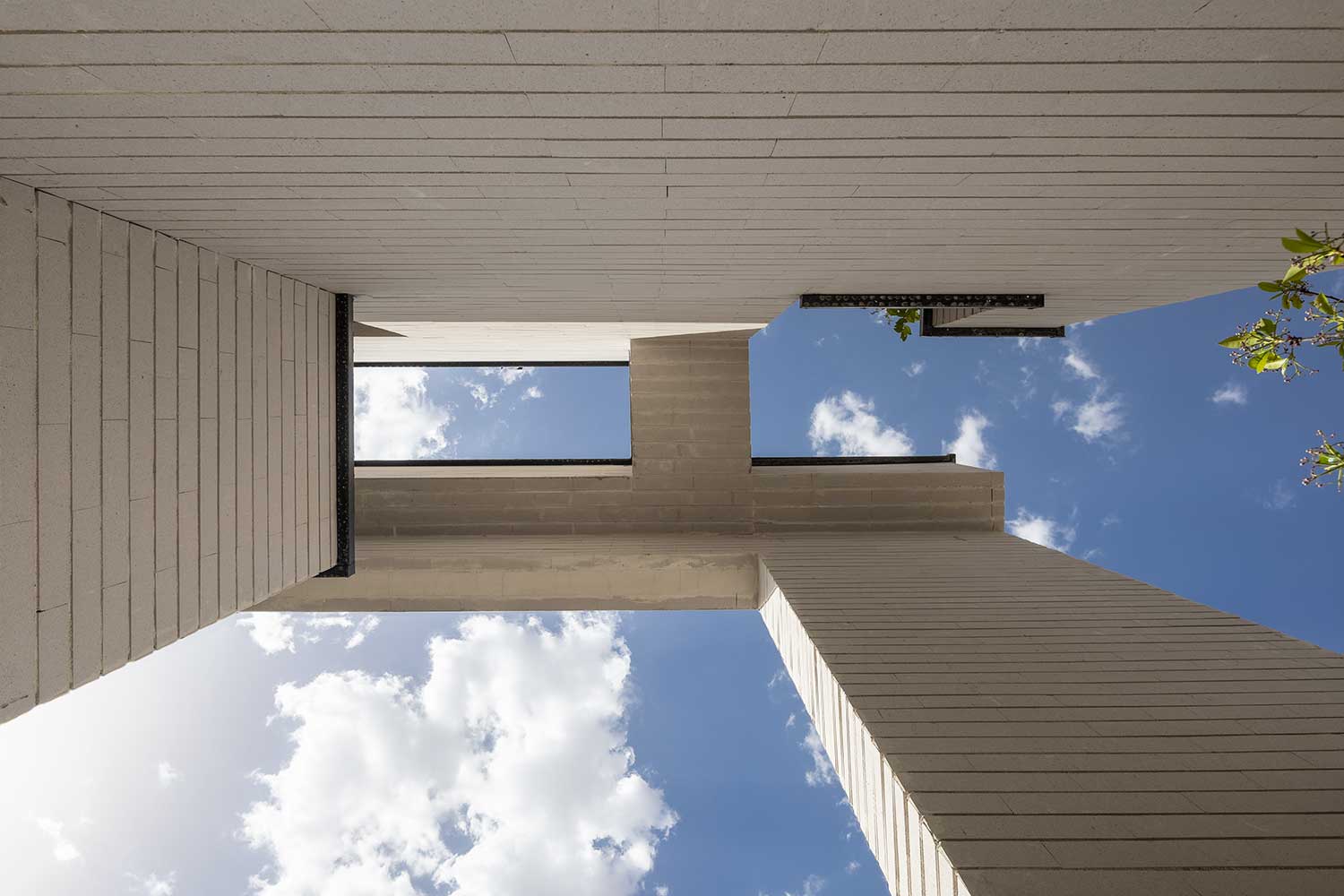
Project Name: Hambud
Function: residential apartment
Company, Consulting Engineers / Design Office: Mohat Office
Principal Architects: Mohammad Hadianpour – Reza Mansouri
Design partners: Katayoun Kazemi, Ali Ehsan Javadinia, Meysam Azizian
Interior design and architecture: Mohammad Hadianpour – Reza Mansouri
Executive: Shahram Mami
Employer: Shahram Mami
Type of structure: Concrete Structures
Mechanical Equipment: underfloor heating-split duct
Project address: Ilam province, Ilam city, Azadi Blvd., 9 Azadi St., Taheri Alley.
Project land area: 296 square meters
The area of the building infrastructure: 900 square meters
Date of start and end of construction: 1398-1402
Project photographer: Parham Taghioff
Aerial photo: Mohammad Reza Saleki
Email: m.hadiyanpour@gmail.com
Instagram: mohammad_hadianpour
Whit the city; Against the context
The city of Ilam in Iran is one of the rare cities where the most of its buildings are constructed with 100% density regardless of paying attention to emit porous and open air spaces .
The way of shaping the city and people’s conventions (in the case of privacy) brought about emitting an incongruous space. Thus, this project, instead of selecting between object -oriented dialogue and field-oriented, attempts to allow the project to be built between the tension of both of them. The project is an alien which is trying to acknowledge and share its dominant idea as a single identity architecture and influences the city’s aspect.
The project is an apartment associated with a family and our concentration was on emitting semi- open spaces, activating them and emitting privacy to be instilled in the deepest part of microspaces. Each of these microspaces is playing a role as a habitant which is correlated with itself and other microspaces in the building.
To respond to the mentioned concerns, we created two shells so the open spaces are forming their active and habitable role between these shells. The project have capacity to respond to the concerns by these ways:
- Capability of physical covering of the parts of open-spaces with the purpose of exiting from observation of context dense.
- Using the theory of shadow sensory error to decrease the concentration from observation of context to indoor spaces and it brought about a capacity which enabled us to use big windows with the least requirement for covering them.
- The open-spaces also are looking for changing the patterns of behavior between residents in the hours of a day and persuade them to be in these spaces rather than indoor spaces, besides, with a joyful observation, reduce the cooling and heating loads.
- Controlling the intensity of sunlight and winter winds leads to decrease the cooling and heating loads.

